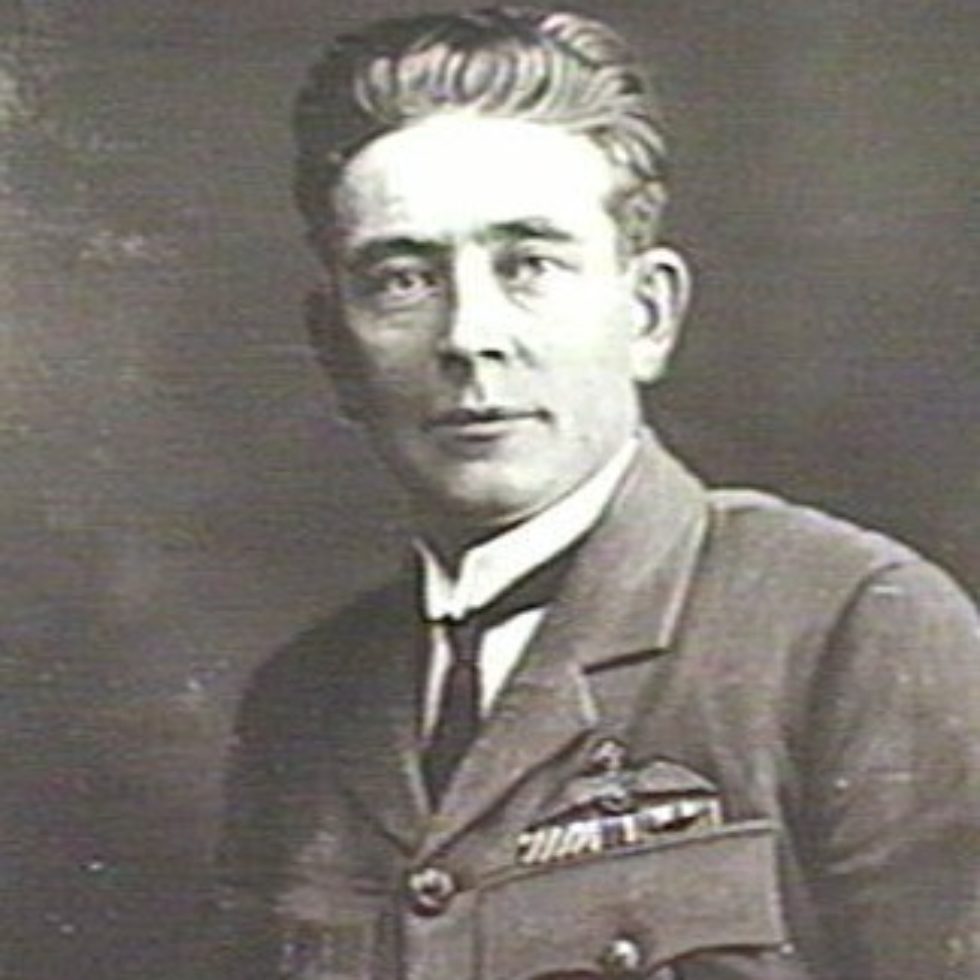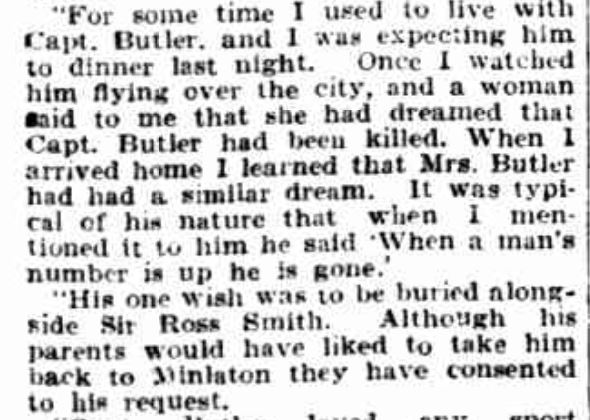
South Australia punched above its weight with aviation pioneers. Four of the six Australian crews competing in the 1919 Air Race were led by South Aussies: Sir Ross Smith; Hubert Wilkins; George Matthews and Cedric Howell. The “father” of the RAAF, Sir Richard Williams, was born in Moonta. You’ll find sources on SA aviators below.
Captain Henry John “Harry” Butler was a national hero when he returned from WWI, and was considered to have pioneered aviation in South Australia. He established the state’s first airfield at Northfield, where the Smith crew landed in 1920. Harry flew out to greet the Vickers Vimy in his little crimson monoplane The Red Devil on their arrival.
Harry established, with engineer Harry Kauper, the first aviation company in South Australia and undertook the first passenger flights (first at Northfield, then at Hendon) and aerial photographs. He also undertook the first flight and airmail over a significant body of water in the southern hemisphere, when he travelled from Adelaide to his hometown of Minlaton on 6 August 1919, carrying 4000 postcards in his Bristol M1C monoplane The Red Devil.
He was also dubbed ‘The Red Devil’ after his monoplane.
During WWI, Harry became a fight instructor at the School of Aerial Gunnery, Turnberry, Scotland (where he did the first airmail from Glasgow to Turnberry), and Chief Fighting Instructor at the Yorkshire School of Aerial Fighting, training around 2,700 pilots with the Royal Flying Corps. He also helped to protect the UK through home defence sorties, chasing German planes that dropped bombs on Ramsgate and German zeppelins that had made their way over the English Channel. He was mentioned in despatches for his operational service (linked to his part in capturing a German submarine) and received the Air Force Cross for his contribution to pilot training and the war effort.
On his return from war, Harry performed aerial stunts over the city of Adelaide and in rural regions, raising money for the Peace Loans which were used for the rehabilitation of returned soldiers, and to build WWI soldier memorials around South Australia. He also was a founding member of the Australian Aero Club (SA branch). Governor Henry Galway was hugely supportive of Harry’s efforts to establish aviation in South Australia.
Harry became a public figure and hero at a time when the community was grieving in the aftermath of WWI. He had a strong affinity for the people of South Australia, and especially children who would chase after Harry’s motorbike or greet him upon arrival in his red monoplane. He would go out of his way to fly over the children’s hospital in North Adelaide or Minda Home at Brighton, and children would even write to him to ask him to fly over their own house.
Crowds attending the Aerial Peace Loan Derby race over Adelaide, or his stunting displays, reached 20,000 to 40,000 people! His marriage to Else Birch Gibson (later Elsa Hay-Taylor) was attended by thousands of members of the general public, standing on rooftops and balconies, vying for a glimpse of the intrepid aviator. Harry even became part of the vernacular, and when told to “hurry up” or “get a move on”, a common contemporary response was “I’m not Harry Butler!”
Harry’s aviation business was eventually liquidated, and Hendon aerodrome was also sold in stages (part of it becoming the first commonwealth government airport in South Australia). The streets of Hendon were said to be named by Harry Butler himself, and bear the names of aviation companies, planes and aviators. Kauper Street is in adjacent Royal Park.
Harry’s motto was “Luck, Pluck and Ability”, and he regularly attended fortune tellers, but his luck ran out when in 1922 his Avro biplane crashed outside Minlaton, leaving him with severe injuries which led to multiple operations. Sadly, he died two and a half years later from a burst brain abscess, on 30 July 1924, aged 34 years. His death shocked the SA community, with The Register saying that “no name was better known, and no individual more sincerely esteemed and beloved than Harry Butler”.
Harry was accorded a funeral with military honours, and many hundreds lined the streets of Adelaide from his home in Clarence Park to North Road Cemetery where his funeral was held in the chapel. According to an article published in Adelaide’s News on 31 July 1924, his “one wish was to be buried along side Sir Ross Smith”, whose funeral he had attended just two years earlier. His grave is near the Smith family’s plot at North Road Cemetery.
After his death, the community raised funds to commemorate Harry’s life, with many contributors being children who donated their pocket money. Among the contributors were Mr and Mrs Andrew Smith, the parents of Ross and Keith. The memorial is the portrait by George Webb, which is owned by the State Gallery of South Australia and on loan to the Minlaton Branch of the National Trust where it can be seen. Other memorials include the 150th jubilee plaques on North Terrace and at Hendon, the 1958 memorial at Minlaton which houses The Red Devil monoplane (the only existing one of its kind in the world) and the 2015 bronze statue of Harry at Minlaton.
Written and researched by Samantha Battams, who joined Minlaton’s Les Parsons in writing The Red Devil: The story of South Australian Aviation Pioneer, Captain Harry Butler, AFC

Excerpt from “Too Young To Die”, a page 1 article in Adelaide’s News on 31 July 1924. Source: Trove. Feature image of Harry Butler top left courtesy SLSA [B 52778]